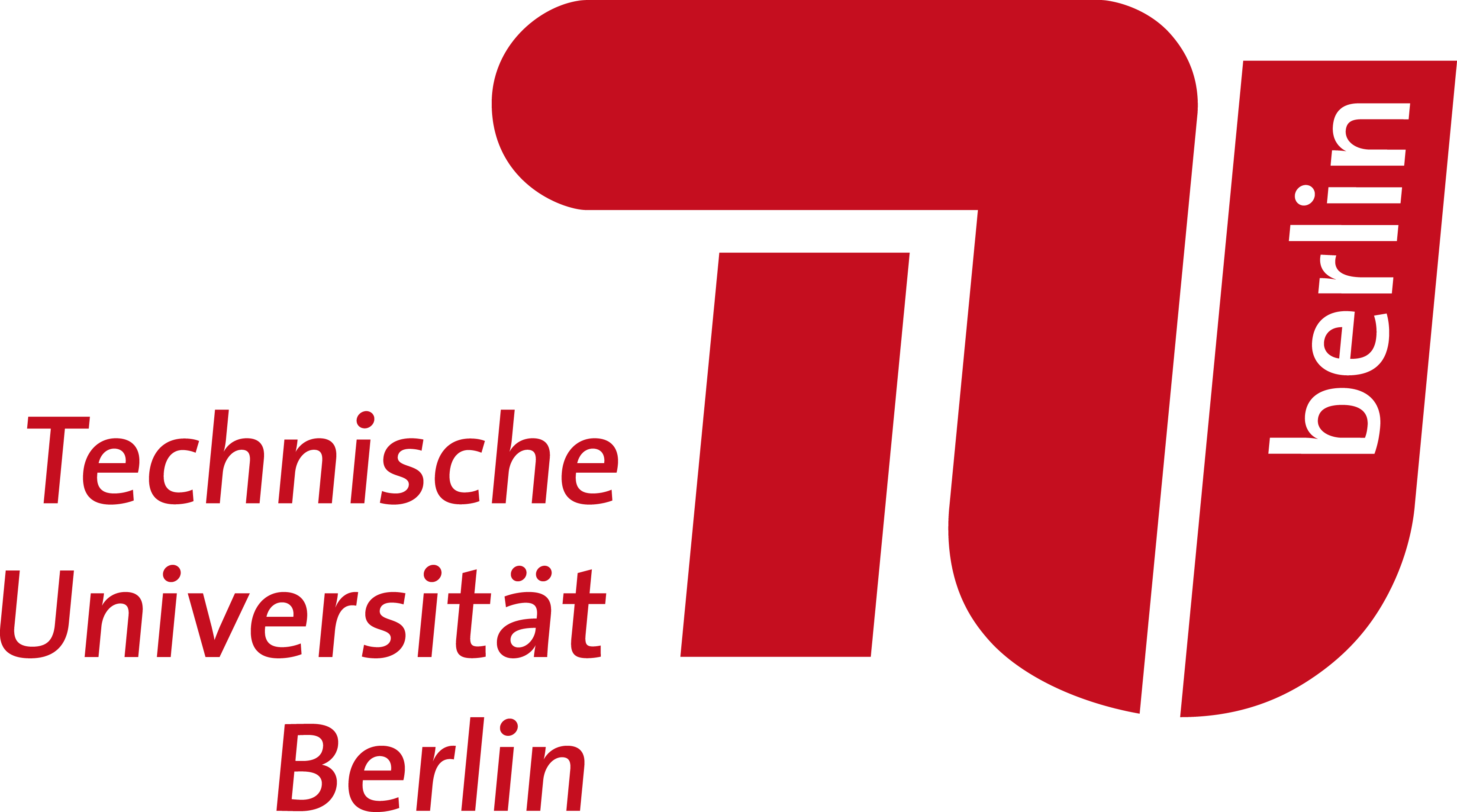Left behind
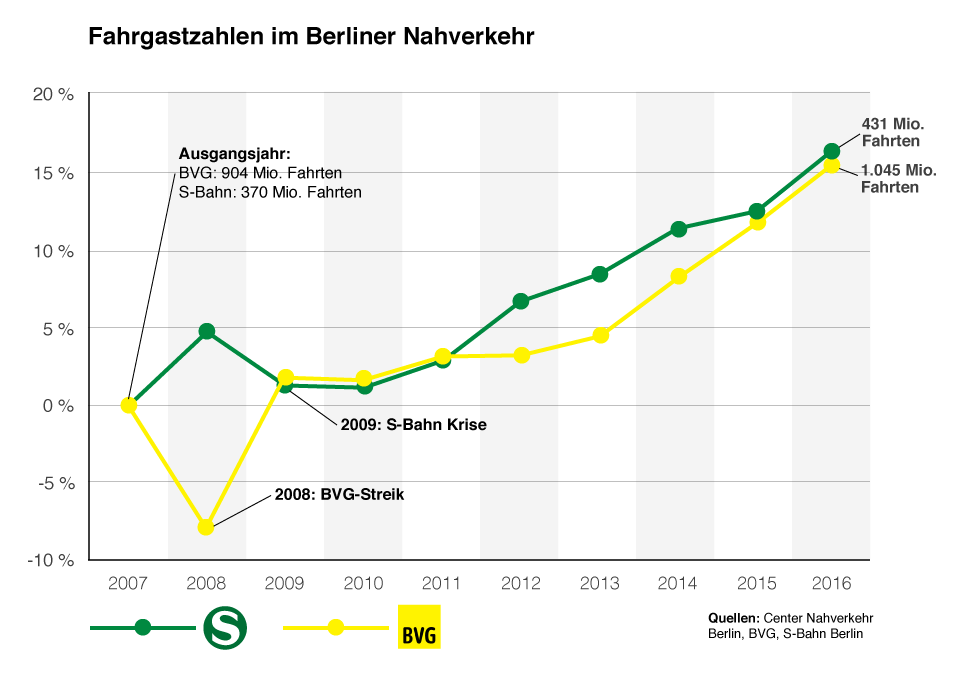
In collaboration with Tagesspiegel, city planners of the TU project “Smart Sustainable District” have examined the areas of stagnancy in Berlin, the blank spots on the map of the public transport network. We have asked traffic planners and politicians why some parts of the city are badly connected and are looking for solutions in a city where nobody should feel left behind. For this, we have calculated the network coverage of more than 6,400 bus stops, 73 underground stations, 133 overground stations and almost 800 tram stops in Berlin. What area is covered when the maximal distance from the station to commuters’ destinations is set at 300, 500 or 1,000 metres? From this, we can discern which of the more than 15,000 city blocks in Berlin are well connected — and which aren’t. What also becomes visible is how well areas with higher than average percentages of elderly or poor residents are linked to public transport.
This much in advance: Berlin’s urban space is mostly well connected, even though there are peripheral areas where low income and a lack of mobility coincide. In areas with higher than average percentages of residents over the age of 65, coverage is mostly adequate, but gaps in coverage are widening with increasing distance to the city centre. This has to be compared with the city’s goal which is written down in the Berlin Traffic Agreement which the senate and the public transport companies have entered into. This agreement states, for example, that in densely populated areas the distance to stations should never be more than 300 metres, and never more than 400 metres in less densely populated parts of town – but the contract only talks about beeline distances.
To calculate how well a street is connected, city planners draw circles around stations – all building blocks inside these circles are considered connected. But often there is no direct connection. This way, 300 metres quickly become 500. And even those who make it onto the bus are not necessarily mobile — with all the traffic jams in the city.
The missing bus
Hedda Leonhardt has a bad back, she breaths heavily when she walks. And when she arrives at the bus stop, there is often no place to sit. Waiting for the next bus, standing up for 20 minutes, has become too much for her. She has worked for the railway for 42 years, so she knows about commuters’ needs — and how large public transport companies react to them.
So she takes it upon herself to catalogue lacking seating accommodations in Lankwitz and Lichterfelde. A friend of hers photographs the stations. The most problematic ones they send to the council. In the middle of June Hedda Leonhardt achieved a first success; the council will put up a bench at one of the bus stops she filed a complaint about.
While Hedda Leonhardt is fighting for a little bit of comfort at the bus stops in the south-west of the city, many elderly in Mitte face a wholly different problem. There, the stops are gone. Four years ago, the BVG changed the routing of the 248 bus. Buses started driving down Axel-Springer-Straße, instead of Alte Jakobstraße, like they used to. This change might hardly have concerned the younger people of the Kiez. They simply walked the few extra meters to the new bus stop at Fischerinsel. For many older people in the quarter, however, this was a catastrophe. Ways that had become familiar over the years — to the doctor, the supermarket, the cemetery — simply stopped existing. Even weeks after the change, local residents remember, old people sat at the abandoned station, waiting for the missing bus. One of those who tried to change that, who collected signatures to get the BVG to reconsider, was Erika Bräuner. All of her energy went into the fight for “her line”. Today she has no energy left, the pensioner says. Walking to the new bus stop at Fischerinsel takes Erika Bräuner 15 minutes — at least. The 80-year-old has talked to a lot of people about what this means for her — even to the BVG. They did not answer her pleas.
Changing shifts in Moabit
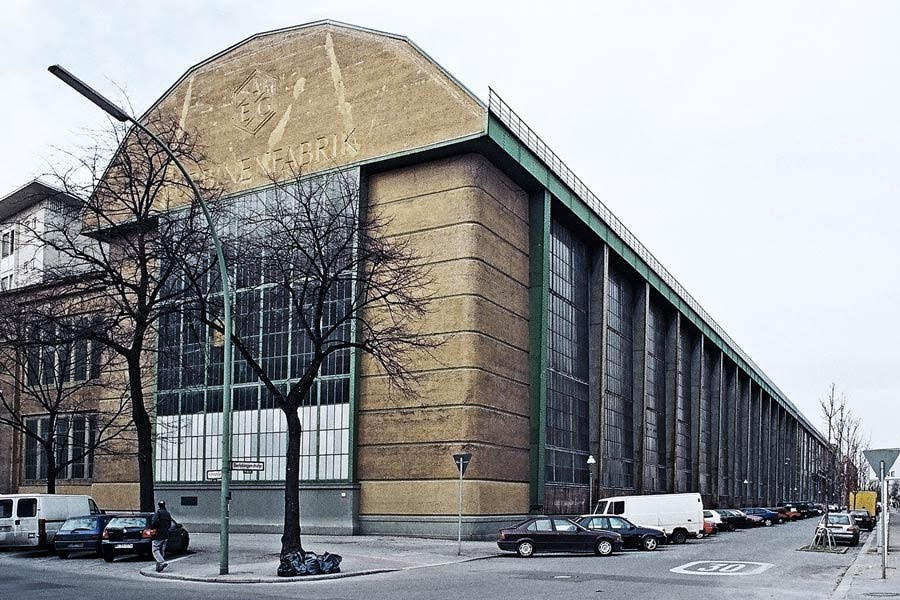
There are reasons for it: In a growing city, public transport has to become more efficient. Whenever priorities change, there are victims who see that as unfair. But efficiency is quite a complicated matter anyway. One of the problems in analysing the data about public transport in Berlin is that not every station is equally important. The S-Bahn and U-Bahn are faster and able to transport several times as many passengers, they are more independent from road traffic and better connected. A growing city should focus more on expanding parallel mobility routes than trying to integrate more and more people into the limited capacities of road traffic. The consequences of the latter approach can be seen near the Siemens plant in Moabit.
For nearly 100 years, the corporation has been constructing turbines there, in an enormous building made of glass, steel and brick. In the past, it was steam turbines carrying AEG’s manufacturer’s plate. After having been largely disassembled following World War 2, the staff repaired public transport vehicles. Today 3700 Siemens employees are again producing ultramodern gas turbines to be used in power stations all over the world. Public transport is an issue, however.

Andreas Tobies, director of the department for central site services, has been working in Moabit for twelve years. He is responsible for maintenance, training and infrastructure. The 45-year-old says that they have been discussing routing with the BVG for years - without success. The problem is the M27 bus. It arrives directly opposite the factory. But since it starts in Pankow and stops 30 times on its way through the city all the way to Jungfernheide in Charlottenburg, it often gets held up by road works, which leads to delays of up to 35 minutes. This is especially difficult for the early shift, 1000 employees beginning their work at 6 am. At this time, buses only go every 20 minutes. And employees are living all over the city and on its fringes.
“I myself am coming in from Henningsdorf”, Tobies says, “so I am thinking twice about whether I shouldn’t take the car every morning”. Because of this, the 500 parking spaces around the plant are overflowing constantly. It is a vicious circle: More commuter vehicles on the streets mean longer delays and vice versa. Shift change at a corporation like Siemens shows how many aspects factor into the fragile skeleton of public transport in Berlin.
Movement in concrete
Its central nervous system is located in three silver towers at the banks of the Spree. There, just a few hundred meters from Jannowitzbrücke, the BVG headquarters are based and it is there that the public transport company plans the city’s movements on digital drawing boards. In the eight floor of tower number two, traffic planners Olaf Bruhn, Arkan Ok and Axel Mauruszat are talking about the challenges created by an ever growing city — and about why it is not always easy to both accommodate people like pensioner Hedda Leonhardt and Siemens employee Andreas Tobies.
They are content with what they have achieved so far, they say. Customers rarely complain about long walks to the nearest station, the planners maintain. It can’t get better, says Olaf Bruhn. “The city’s road system does not allow for more.” The few gaps that still exist, they add, simply cannot be accessed by bus. The streets are too narrow, the road surface is too rough, the turns are too tight. In the past, Berlin was spacier.
Planning for the majority
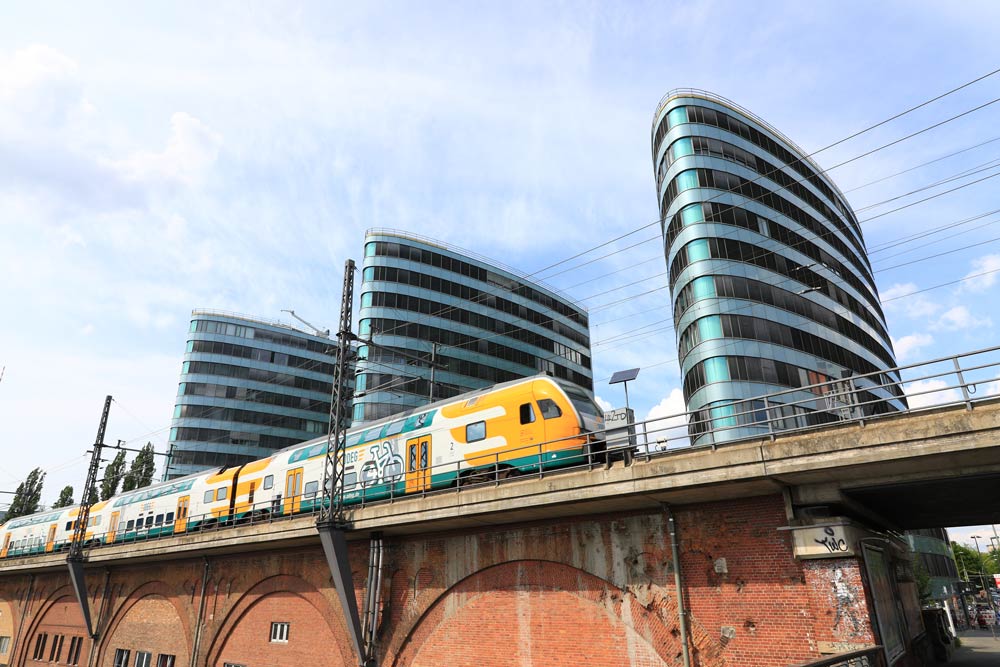
The planners’ main problem today is: In order to obtain planning permission for an area, no public transport plan is required. Thus, the BVG traffic planners often have to develop inroads into already existing residential areas. “We do not plan for a specific target group, we are planning for everyone”, Bruhn says, in answer to the question as to how they are accounting for different needs. Despite that the BVG kept the zig-zag route of line 123 from the main station through Moabit, all the way to Siemensstadt, surveys had shown that many residents are relying on this direct access to the main station or to Moabit. “Older citizens would be extremely unhappy if they could not reach the main station anymore”, Bruhn says.
Often, however, such demands clash. What is good for older people like Hedda Leonhardt is problematic for people like Andreas Tobies. But altogether, it’s mass that counts. The more people have to change lines, the less likely it is that they use public transport, Arkan Ok explains. It’s about profitability, after all.
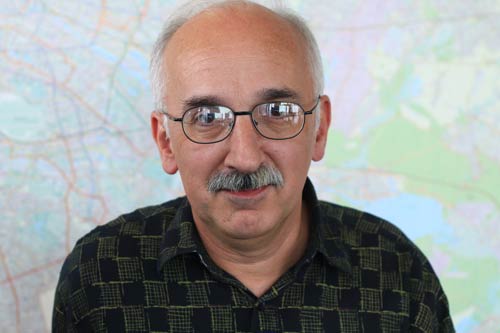
The planners are taking into account residential and business areas, population numbers, shopping malls as well as tourist destinations. People’s age and whether they have drivers licenses is taken into account as well, they say. But when new routing promises better utilisation, the lines are changed.
This is what happened in the case of Erika Bräuner and “her” 248 bus. Since moving the route to Alte Jakobstraße, passenger numbers have increased by double-digits, Ok explains. The cessation of lines and stops, however, takes place ever more rarely. “We have been increasing the network’s performance year after year”, Axel Mauruszat says. The senate has been allocating extra funds through special programs. The city’s growth has led to 64 million extra trips per year. Since then, the planners put it, nothing has to be “shifted” anymore. But what is added leads to further congestion of road traffic through more bus and tramway lines.
The BVG would like to extend U-Bahn lines, for example lead the U1 past Warschauer Straße. All they can do is suggest it, though. It is up to the senate to order more buses and trams or building a new U-Bahn line.
The fast solution
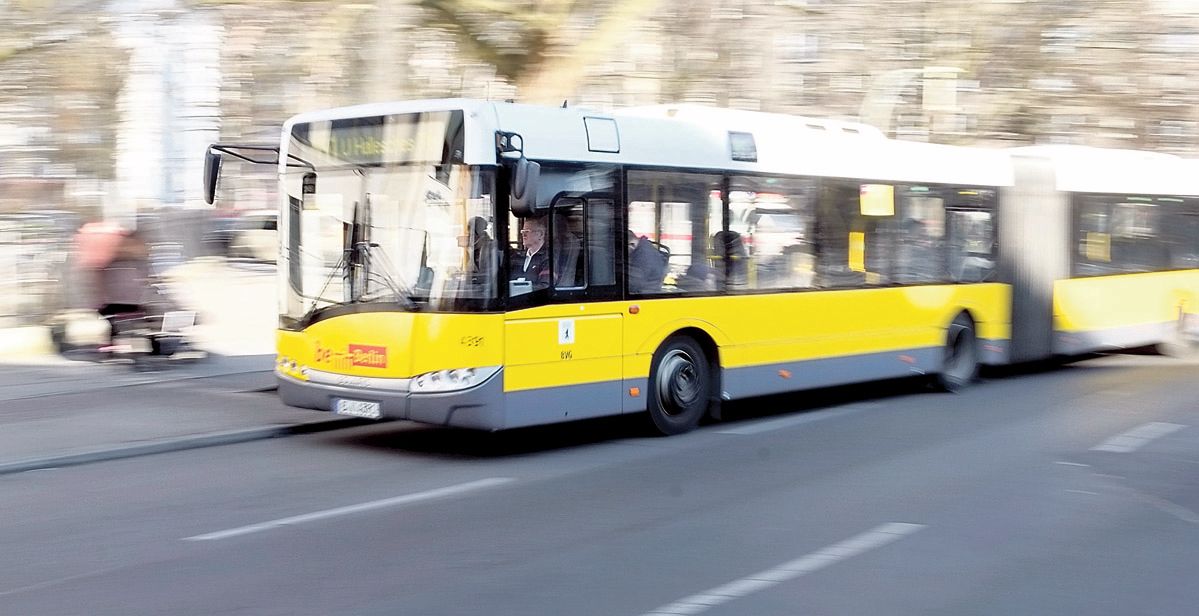
Projects like these are written down in the coalition treaty of the current government parties SPD, Grüne and Die Linke. Eleven pages of this treaty are dedicated to the coalition’s plans for mobility. New U-Bahn lines are not part of it. Half a year after getting into office, however, the traffic senator now wants to examine whether expanding certain U-Bahn lines might be practical. Open for debate are lines like the U8, an expansion of the U7 down to Schönefeld station or a junction in Pankow, connecting the U2 and U9.
“We have comparatively good public transport in Berlin”, maintains Günther, an independent, whom the Green Party have brought to Berlin. Building overground and underground lines is not ruled out completely, but it takes a long time, the senator says and continues: “We also need fast improvements in public transport. When I can employ a large, articulated bus, people can reach their destination immediately faster and more comfortable.”
14 new tram lines
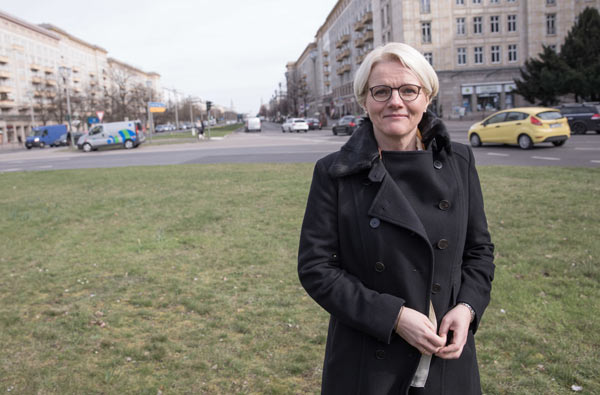
Along this model transport politics in Berlin are being pursued. Fast solutions are being favoured over big ones. The senator hopes to reduce congestion through policies that are less focused on cars. She has a model of a Berlin tram in her office in an old building near Köllnischer Park. Her predecessor Andreas Geisel gave it to her. In the next five years, she wants to create 14 new tram lines.
Critics call that: a botch job. Others say that building underground lines on a large scale has become unaffordable. Since the city’s immediate underground is mostly used, U-Bahn tunnels have to go deeper and deeper. Privately, she uses the bike, Günther says. She wants to offer sensible alternatives, so people stop using cars voluntarily. Not everyone will have a car in the future, she thinks. The rising popularity of car sharing services seems to support her vision.
It doesn’t solve the main problem, however: the increasing congestion of the city’s roads. On top of that, a look at the badly connected areas on a map of the city shows: In areas where there are supply gaps in public transport, car sharing services are missing, too. Even though providers like DriveNow and others emphasise that they are constantly increasing their business areas — there still isn’t happening much outside of the Ringbahn. The areas where these services could close gaps are simply not profitable for the firms. Günther admits that there are “some shortages in the periphery”, but at the same time she does not want to subsidise alternatives like car or scooter sharing services.
Spandau remains outside Berlin
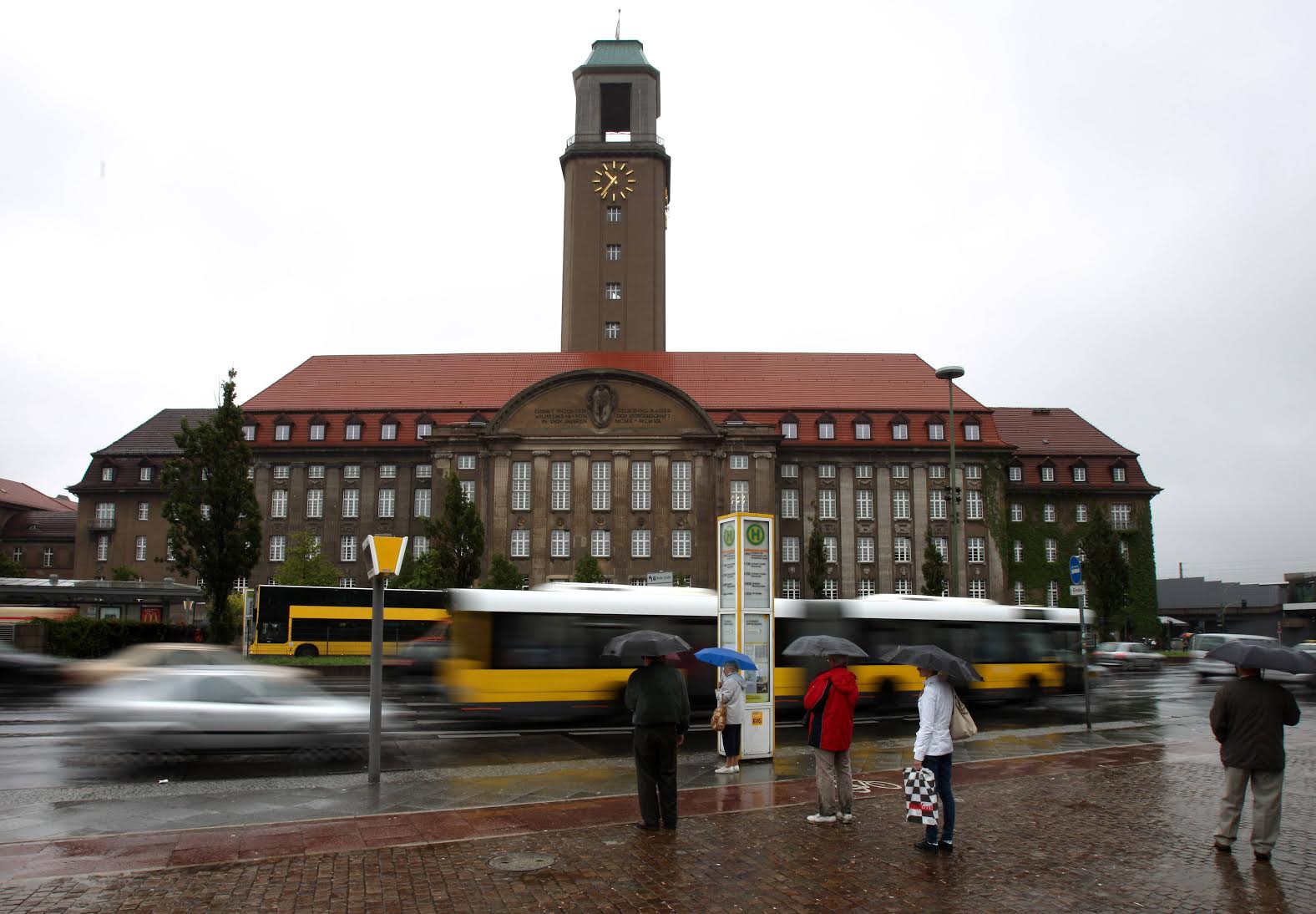
One big solution instead of many small ones is what Spandau mayor Helmut Kleebank wishes for. From his office in the city hall, he witnesses the chaos every day. Here, all the transport lines come together, masses of commuters change busses, step on trains. Kleebank (SPD) knows that Spandau is well connected — in theory. In reality, stations are fairly close, but to get into the city, commuters first have to change at the junction at Spandau Rathaus.
Spandau, Kleebank says, has reached full capacity. That is why he wants the extension of the S-Bahn, and an expansion of regional train services — to better handle increasing number of commuters. That is not in the coalition treaty, though.
A second track
The S-Bahn company itself would like to extend their line past Spandau, says its CEO Peter Buchner. “We have been advocating an S-Bahn into the Havelland for a long time”, he says. His list of wishes is long. He is dreaming about a better service to Tegel to reduce the current 20 minute interval between trains, even if that means that a second track would have to be built between Schönholz and Tegel, where the S-Bahn so far has been improvising on only one track.
A line to Kleinmachnow would be necessary as well, as well as a north-south connection from the main station through Tiergarten tunnel. Buchner believes that Park and Ride will otherwise lead to new displacements within Berlin. The bike parking lots the senate wants to build near S-Bahn stations he finds promising though. Using a bike instead of walking increases the catchment radius of a station by four, he says, but taking one’s bike into the train will soon be unrealistic in a growing city.
Unusual solutions
The solution for all these problems could be Olli. At least that is what they think at the Euref Campus in Berlin-Schöneberg, where the little bus is rumbling around, following invisible rails across campus. Olli is the first autonomous bus allowed to operate in Berlin. In collaboration with the Innovationszentrum für Mobilität und Wandel, Deutsche Bahn is testing the bus built by Local Motor, a Californian startup. In the future, the bus, seating eight, is supposed to transport people to their homes on the outskirts of the city. Or to the next bus stop at least — electrically, of course.
At the moment the bus is still being monitored by two test drivers looking for flaws in its system. From time to time, the drivers even have to steer it through tight spots — Olli has no reverse gear. One of the passengers in the bus is Deutsche Bahn director for autonomous driving, Michael Barillère-Scholz. He strongly believes that small, autonomous shuttles like Olli are making the difference necessary to create gapless public transport networks. Since no drivers have to be paid, autonomous shuttles would be cheap enough to be operated only when they are needed.
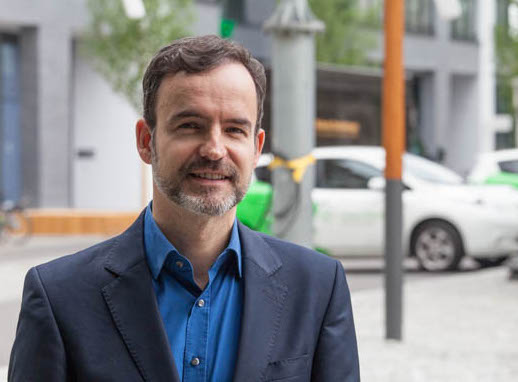
Prices of 15 to 30 cents per kilometre sound realistic to him. Olli could have many different applications. “Especially in families there is a lot of single traffic. Parents are bringing their kids to football practice. A collective taxi would make sense here”, Barillère-Scholz is convinced. Olli also could pick up Hedda Leonhardt on her door step or cover the last few meters between the bus stop and the Siemens plant in Moabit.
It will take years before that can happen, though. Olli still has a lot to learn. The problem is: The bus is like a child that is not allowed to play outside. Since in German cities autonomous cars are not being tested in real traffic, the AI cannot learn anything about urban traffic and reacts clumsily. To remedy this, the Straße des 17. Juni has been declared a test track, where different manufacturers can try out their cars. Next week the BVG will present a collaboration with the Charité, which is expected to use self driving minibuses as well.
### Mobility for all? Already today, the intelligent connection of existing services could close many mobility gaps in the city. BVG and Deutsche Bahn are working on integrating new features into their apps, simplifying changing from one means of transport to another. Car sharing vehicles are now being shown in the BVG app and in underground stations the app informs users about nearby bike rental stations.
If platforms like these become more intelligent and can be used to reserve bikes, scooters and collective taxis long before calling autonomous shuttles in a few years, life without a car could become increasingly appealing, many mobility researchers argue. One of those is Diana Runge, a traffic researcher at the Center Nahverkehr Berlin, the institution advising the senate in traffic management. She also sees possibilities in the intense growth of the city which is causing traffic problems in many areas.
New chances
“For many people, moving is a key moment in changing their mobility behaviour”, says Diana Runge. In the next few years, new residential areas will be developed in eleven different places across the city. Mostly young families will move there, from other parts of the world and other parts of Berlin.
If new residential areas are connected well, she says, people will be more likely to leave their cars at home. In order for that to work, it would be necessary for new residential ares to have underground connections. Since it is one of Berlin’s peculiarities that both rich and poor people live closely together on the outskirts of the city, the effect would also benefit areas suffering from high unemployment, low income and high child poverty.
A lack of connection can quickly become a lack in social mobility, Runge argues. Not only, because one cannot choose who to meet and where to apply for work. Less geographical movement leads to less mental mobility, researchers studying lack of mobility warn.
You have to move through the city to imagine the city.

